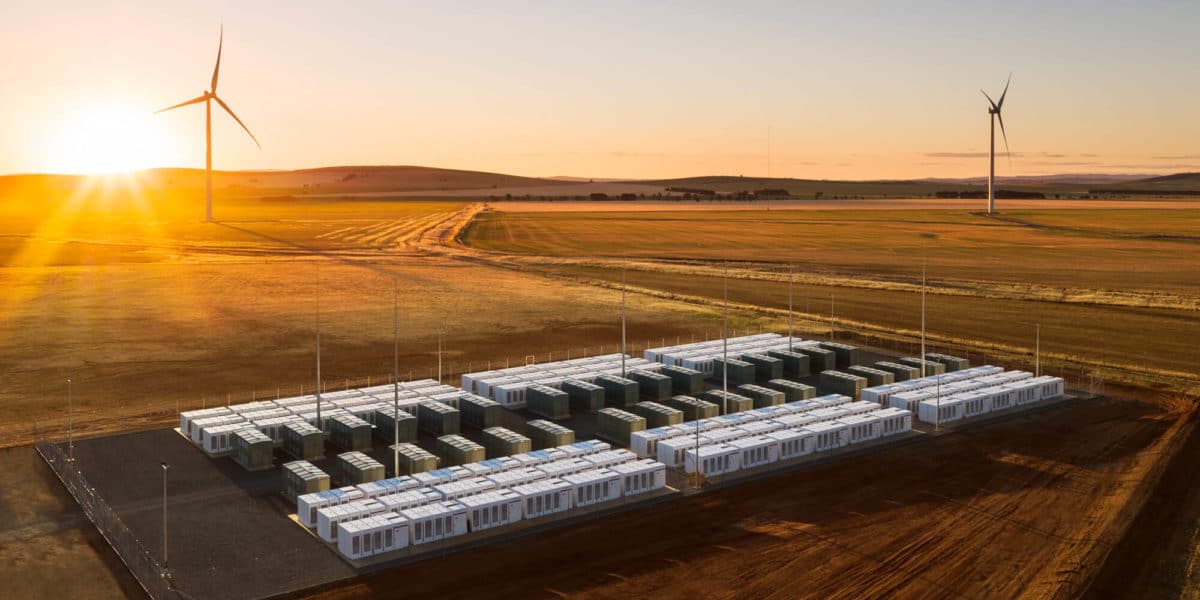The Department of Energy’s (DOE) Advanced Research Projects Agency-Energy (ARPA-E) has chosen ten projects as part of its Duration Addition to electricitY Storage (DAYS) program, which aims to develop energy storage systems that provide power to the electric grid for durations of 10 to approximately 100 hours.
DAYS Projects fall into two categories:
- Systems that provide daily cycling in addition to longer duration, less frequent cycling
- Systems that do not provide daily cycling, but can take over when daily cycling resources are either filled or depleted
The goal of the program is to get the levelized cost of storage, per cycle, to be 5¢/kWh in the 10 to 100 hour format.

The ten projects chosen (PDF) by ARPA-E are:
National Renewable Energy Laboratory – Electric heaters will warm stable, inexpensive solid particles to temperatures greater than 1100°C during charging. To discharge the system, the particles will be fed through the heat exchanger, heating a working fluid to drive the gas turbine attached to a generator.
Michigan State University – A modular thermal storage system that uses electricity from sources like wind and solar power to heat up a bed of magnesium manganese oxide (Mg-Mn-O) particles to high temperatures. Once heated, the Mg-Mn-O will release oxygen and store the heat energy in the form of chemical energy. Later, when additional power is needed, the system will pass air over the particle bed, starting a chemical reaction that releases heat to drive a gas turbine generator.
Brayton Energy – An energy storage system that combines thermal storage and a gas turbine to generate power. When the system is charging, an electrically driven heat pump will accumulate thermal energy in a molten salt solution, which can then be discharged later by heating gas and sending it through the generation turbine.
Form Energy – A long-duration energy storage system that takes advantage of the low cost and high abundance of sulfur in a water-based solution.
Quidnet Energy – Modified pumped hydro energy storage system using rocks beneath the Earth’s surface. The team will pump pressurized water into gaps in underground rocks. When energy is needed later, the induced strain in the surrounding rock will force water back through a generator to produce electricity.
Primus Power – A refinement of the zinc bromine flow battery will eliminate the need for a separator to keep the reactants apart when charged, as well as allow all the electrolyte to be stored in a single tank, instead of multiple cells heavily reducing costs.
University of Tennessee – Using the fuel cells to produce hydrogen peroxide: a liquid that can be easily stored and converted to oxygen. When extra power is needed on the grid, the fuel cell will produce peroxide and electricity. Available electricity then can be used to efficiently convert the peroxide back to oxygen during the charging cycle.
Echogen Power Systems – A carbon dioxide (CO2) heat pump cycle to convert electrical energy to thermal energy by heating a “reservoir” of low cost materials such as sand or concrete. The reservoir will retain heat that will be converted back into electricity on demand. To generate power, liquid CO2 will be pumped through the high-temperature reservoir to a supercritical state, after which it will expand through a turbine to generate electricity from the stored heat.
United Technologies Research Center – New flow battery chemistry using inexpensive and readily available sulfur-manganese based active materials. The team will overcome challenges of system control and unwanted crossover between the two active materials through the flow membrane.
Antora Energy – Thermal energy storage system that contains thermal energy in inexpensive carbon blocks. To charge the battery, power from the grid will heat the blocks to temperatures exceeding 2000 °C. To discharge, the hot blocks are exposed to thermophotovoltaic panels that are similar to traditional solar panels but specifically designed to efficiently use the heat radiated by the blocks.
The projects varied in energy storage techniques – though there was a definite focus on thermal storage with six of the ten projects. Two flow batteries and a fuel cell were the only ‘standard’ energy storage types.
This content is protected by copyright and may not be reused. If you want to cooperate with us and would like to reuse some of our content, please contact: editors@pv-magazine.com.









By submitting this form you agree to pv magazine using your data for the purposes of publishing your comment.
Your personal data will only be disclosed or otherwise transmitted to third parties for the purposes of spam filtering or if this is necessary for technical maintenance of the website. Any other transfer to third parties will not take place unless this is justified on the basis of applicable data protection regulations or if pv magazine is legally obliged to do so.
You may revoke this consent at any time with effect for the future, in which case your personal data will be deleted immediately. Otherwise, your data will be deleted if pv magazine has processed your request or the purpose of data storage is fulfilled.
Further information on data privacy can be found in our Data Protection Policy.